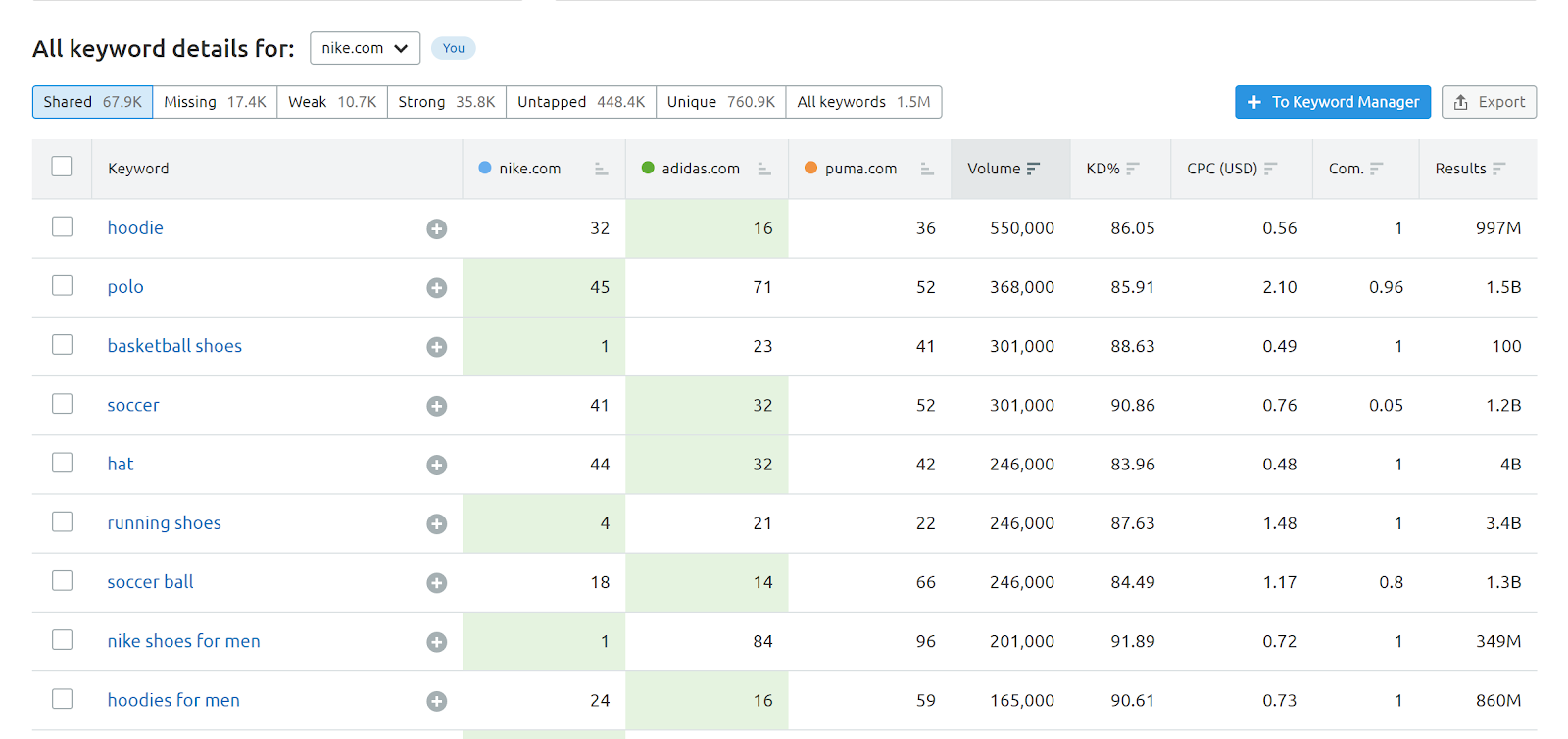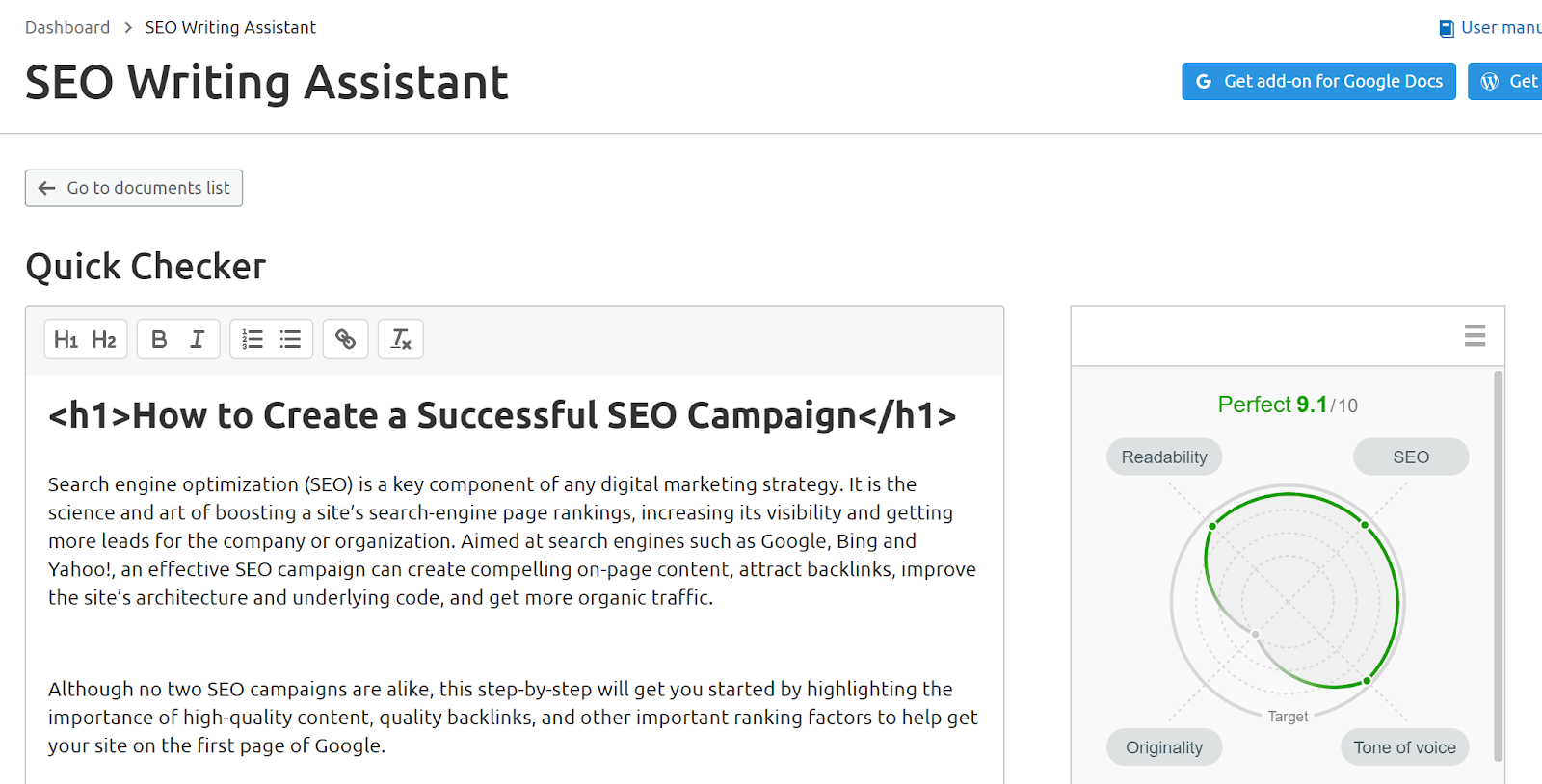What is SEO? Search engine optimization is a key component of any digital marketing strategy. It is the science and art of boosting a site’s search engine page rankings, increasing its visibility, and getting more leads for the company or organization. Aimed at search engines such as Google, Bing, and Yahoo, an effective SEO campaign can create compelling on-page content, attract backlinks, improve the site’s architecture and underlying code, and get more organic traffic.
Although no two SEO campaigns are alike, this step-by-step guide will get you started by highlighting the importance of high-quality content, quality backlinks, and other important ranking factors to get your site on the first page of Google.
What Is an SEO Campaign?
Many people enter the industry and wonder how to run an effective SEO campaign. It’s usually part of a long-term strategy with many moving parts, including keyword research, content audit, SEO analysis, on-page optimization, link building, and many other considerations. The goal is to improve search engine rankings.
64% of marketers actively create SEO campaigns because they help hit multiple key performance indicators (KPIs), including increasing traffic, helping your site rank for relevant keywords, improving your conversion rate, and much more. Its biggest appeal to marketers is that it tends to be a very cost-effective solution because it helps you reach more than one marketing goal.
An effective SEO campaign strategy can include:
Gauging the health of your website: Using our Site Audit tool, you can see all the issues that your domain currently faces, including broken links, images without alt attributes, and much more to help you figure out what to prioritize during your SEO campaign.
Competitor analysis: To guide your SEO strategy, a good place to start is to review what is and isn’t working well for a competitor. Our Domain Overview tool includes scores for site authority, organic search, paid search, backlinks, display advertising, and traffic engagement for up to three competing URLs.
Keyword research: You should identify both primary and secondary keywords with specific pages.
High-quality content: After choosing the correct keywords, you should create compelling content that hooks interest and drives traffic. If the content doesn’t align with the keywords you’ve chosen, visitors to your site may leave disappointed, without being converted to sales.
Optimizing on-page SEO: This process optimizes internal elements of webpages to be more easily read by users and crawled by search engines. Elements can include title tags, meta descriptions, H1 tags, keyword density, and much more.
Thoughtful link building: While having many backlinks from other sites can help boost page rankings, the quality of the links from reputable sites is more important than quantity. You don’t want to include links from sites spamming you only to boost their ranking.
Social media engagement: Sharing content through various social media sites can help boost your site's traffic and increase page ranking. With our Social Media Tracker tool, you can track your social media platforms and measure how well your intended audience engages with your content.
Continue reading to get more valuable information on some of the key steps you need to create the best SEO campaigns.Step 1: Find the Right Keywords
Keyword research is about finding the most important search engine queries related to your site and customers. The keywords need to be sorted and prioritized in logical groups to better create new content against them and refine or dramatically change existing site content.
With a keyword research tool such as our Keyword Gap, you can see which keywords competitors are ranking for, and you’re not, in organic and paid-for traffic. The tool offers a side-by-side comparison between keyword profiles of up to five competitors, showing you all of the best opportunities for each site, total keyword overlap, common keywords shared among the sites, and much more.

When looking to create an SEO campaign, keyword research involves accumulating all possible variations of search terms that might be relevant to your current site, content, products, services, and relevant to the customers you’re targeting.
Step 2: Publish and Optimize Your Content
When looking at how to run an SEO campaign, content optimization plays an important role. To do this, you need to understand what users are searching for, why they’re searching for it, and what they expect once they find it.
It’s not just a matter of using the right keywords but using them in the right way. They can’t be thrown haphazardly into content but need to be incorporated with care, keeping the language’s natural flow and meaning intact. You also want to make sure it’s accurate and well researched while including thoughtful internal and external links.
Your content also has to appeal to the demands of the search engine algorithms for the best chance of appearing in the top rankings. Some on-page ranking factors to page optimize include:
Meta descriptions
Page URL
Title tag
Images and their respective alt tags
Fortunately, there are several SEO tools to help with the creation of SEO-friendly content. Our On Page SEO Checker offers a writing assistant, for instance, to provide actionable SEO tips on how to improve your content, including any keywords that might help you rank higher.

Step 3: Build Backlinks
Link building, or creating backlinks, is the process of attracting inbound links to your website from authoritative sources. In building backlinks, you have to consider how relevant the linking site’s topic is to yours, how fresh the link is, how the anchor text is used on the site, how many other links on the site link back to yours, and more.
Getting organic backlinks can be a challenge, so it’s a good idea to incorporate this process into your content creation and social media strategies. Creating blog posts that people read and cite and social media posts that get widely shared is a great way to get organic backlinks.
With our Backlink Gap tool, you can compare up to five competitor sites at once, seeing who links to them and not to you, and looking for gaps in their link-building strategies that you might be able to exploit.
Other ways to get backlinks include:
Identifying and repairing broken backlinks: You can go to the webmaster of a site to report a broken link and then suggest a link to your site as a replacement.
Guest blog posts: Blogging on other sites helps you build backlinks and builds your reputation, which can increase traffic to your site.
Creating infographics: People love to consume information through the easy visual hierarchy of infographics. Creating infographics that people share, with accompanying embed codes, is a good way to get backlinks.
Promoting content: Get the word out for your best content. Look for sites that do weekly or monthly roundups of related content, and submit yours. If you have a database of subscribers interested in your content, don’t forget to send them an e-blast.
Step 4: Monitor Results
You don’t usually create an SEO campaign in isolation. What you learn from one SEO campaign helps you improve what you do in the next. So, monitoring the results of each campaign is important to future success.
Some of the important metrics, or quantifiable measures, to include are:
Organic traffic: This measures the number of visitors to your site through organic search. If you’re picking the right keywords and creating good content against them, the visiting numbers should increase.
Bounce rate: This is the number of visitors to your page who leave right away without engaging with it. If you have a high bounce rate, your content isn’t delivering against visitor expectations.
Clickthrough rate (CTR): This measures the number of people who proceed to your site from a search page result. If two people in 10 clicks go to your site as a result, that is a 20% CTR. The CTR shows how you’re grabbing people’s attention on a search engine results page (SERP).
Keyword rankings: How your keywords rank against others.
Site authority: Your site’s authority in Google’s eyes can be determined by its backlink profile.
Page loading speed: It’s important to know this because slow-loading pages will prompt impatient users to jump off before completion.
New referring domains and backlinks: The number of new backlinks you get from a number of unique domains is important measures of how your site is doing.
With SEMrush’s Position Tracking tool, you can check your page's rankings over time and compare them to your competitors, helping you find new ways to improve search engine results. To set up the tool, just select a domain (or subdomain), target keywords, location, and device. Then, it starts collecting the data from the specified search engine and gives you fresh information on that domain’s positioning.
Run an Effective SEO Campaign
To create an effective SEO campaign, you have to be prepared to grind through a marathon and not just blast a fast sprint. To be successful requires patience, methodology, insight, and a proven set of SEO tools. The right tools used by the right hands can yield results that turn an SEO campaign into an SEO triumph.Innovative SEO services
SEO is a patience game; no secret there. We`ll work with you to develop a Search strategy focused on producing increased traffic rankings in as early as 3-months.
A proven Allinclusive. SEO services for measuring, executing, and optimizing for Search Engine success. We say what we do and do what we say.
Our company as Semrush Agency Partner has designed a search engine optimization service that is both ethical and result-driven. We use the latest tools, strategies, and trends to help you move up in the search engines for the right keywords to get noticed by the right audience.
Today, you can schedule a Discovery call with us about your company needs.
Source:





